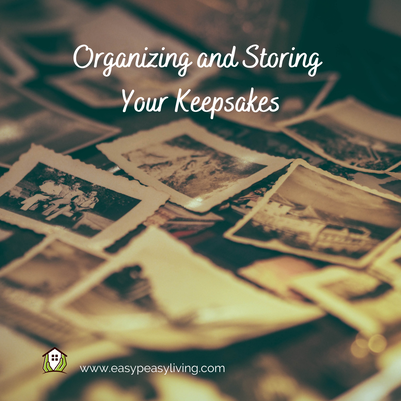 How many boxes and bins of stuff are you storing for purely sentimental reasons? How cluttered are your shelves and cabinets with stuff you’re reluctant to part with because of all the memories they evoke? Whatever your answer, you’re not alone. Keepsakes...memorabilia...souvenirs...whatever you want to call them, are often the most troublesome belongings to maintain control over for everyone, myself included...and I can be downright ruthless when it comes to getting rid of stuff I don’t use regularly. As we struggle to figure out where to start in establishing order over it, more trinkets continue to pile up, making the task at hand ever more daunting. Organizing your keepsakes is no different from any other organizing project. We begin with three primary goals in mind:
Let’s take a closer look. Reducing Volume First, decide how much space you’re willing to devote to your sentimental objects. Remember that stuffing them into a storage bin in the back of a closet or the deep recesses of your garage won’t allow them to trigger the memories...and that’s the whole point of keeping them, right? With that in the front of your mind, try some of these strategies to reduce the amount of space they gobble up:
Creating Easy Access Let’s be honest...how likely are you to dig out those big rubber storage bins and old cardboard boxes from the crawl space in your attic and spend hours pouring over your kids’ old artwork? Yeah...that’s what I thought. So why are you keeping it? While most people neither plan to nor need/want to devote time to regularly reviewing their scrapbooks and photo albums, those options offer the ability to more easily find and share precious memories as long as they are stored within easy reach. The less you keep, the easier it is to create easy access to your memories so that you can pull them out when the mood or opportunity to share them strikes. And you don’t have to be a crafty scrapbooker to do it. The key is to reduce the volume enough that you can store them in an easy-to-reach section of your living space rather than in the basement, attic or garage. Imagine Cousin Sue comes over for lunch and you get to reminiscing. How easy will it be for you to pull out that stack of old letters she sent you from summer camp when you were kids? Make it so. Consider some of the storage methods below and select the ones that work best for you and your family:
Preserving and Identifying Most people keep some combination of memorabilia they’d like to pass along after they are gone and items that carry meaning for no one else but them. Do your loved ones a favor and differentiate between these two categories to make their job easier when faced with the daunting and emotional task of going through your things after you pass. I know it may sound morbid, but knowing you have done your part to make that process a little bit easier for them will ease some anxiety for you now, while also ensuring that you will be leaving them precious memories instead of just more stress to add to their grief. Here are a few loving steps you can take to achieve this:
Of all the items you make space for in your home, your keepsakes are really the only ones that can’t be replaced. If they are worth keeping, they are worth devoting some time and effort to preserving with care. While it can be overwhelming to think about that huge stash of old papers, photos and trinkets stashed away in your attic (or wherever), tackling it now and making some intentional decisions to transform it into a more manageable storybook of your life will be some of the most enjoyable and thought-provoking work you’ve ever done. With these three stated goals and the creative, yet practical strategies I’ve laid out over the last few blog posts, even establishing order to your keepsakes can be easy peasy.
0 Comments
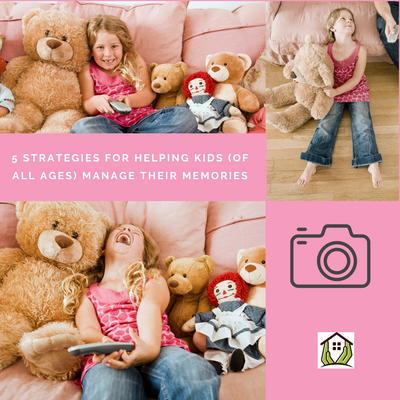 Raise your hand if you either have kids or were once a kid yourself. If you raised your hand, this one’s for you. Kids and former kids alike tend to struggle with letting go of items that represent memories. Even I, the queen of getting rid of stuff, struggle from time to time. No matter how much of a minimalist you may be, guaranteed you’re hanging onto some things merely because they remind you of special memories, people, or achievements. And there’s nothing wrong with that just as long as you’re doing it selectively and with intention. But so often, we end up holding on simply because we aren't sure how, when or whether to let go. That keeping-by-default approach eventually leads to clutter, which in turn leads to disorganization when the clutter becomes unmanageable. Learning how to make choices about your belongings with confidence is key to avoiding what I call "clutter creep”. Teaching kids that skill is as important as teaching them to balance a checkbook, yet it’s one aspect of child-rearing that often gets overlooked because parents themselves never learned how to do it. Kids are notorious for wanting to keep everything under the sun because they haven't yet fully experienced the many negative consequences of clutter creep. And if no one teaches them how to make thoughtful, intentional decisions about their stuff, they’ll continue to keep by default and grow up to be former kids who feel compelled to keep everything. Perhaps you know someone who fits this description? The good news is that by learning just a few simple strategies, they can instead grow up to enjoy a lifetime of clutter-free living as adults and save you from grappling with their clutter creep in the meantime (perhaps on top of your own). So whether you’re hoping to raise a de-cluttered kid or to become a de-cluttered former kid, read on. First, two important points to remember when it comes to keeping memorabilia: 1) Their main function is to trigger a positive memory (thus the name “memorabilia”) 2) Less really is more. Think about this for a minute: How is a huge stash of photos, old school papers, certificates, artwork, old birthday cards and so on helpful in preserving memories from the past? Not only is it in your way, limiting activity in your present and threatening productivity in your future, but all the memories that stuff represents are currently hidden in a big, anxiety- and stress-provoking mess. In order to trigger any precious memories, you would have to take time to sit down and actually go through that big pile, piece by piece...yet most of us are actively avoiding the big pile... which is precisely how it has grown so unwieldy. We’re procrastinating looking through it because it's overwhelming. It represents unmade decisions, uncertain outcomes and sometimes even guilt as the pile continues to grow. It doesn’t feel fun or inviting the way your old memories should feel. Add to that the visual noise and inconvenience of having to live around it. Whether you’ve stashed it all away in some storage closet or are tripping over it every day, it is there...unmanageable and unconquered...nagging at you in the back of your mind (or maybe even in the front of it). At some point, that huge stash of what is supposed to be positive memories has become a big pile of negativity. And guess what...your kid's stash can feel that way to them too. So what to do with it? Strategy #1: The Transformation Challenge A couple of weeks ago, I talked about functional keepsakes in this blog. If you missed it, go back and read about them here. The idea is to transform your 3-dimensional keepsakes into something that serves a practical purpose. An example would be a big seashell your child collected during a family beach vacation. Help her brainstorm ways this purely sentimental object can fulfill a functional need. Turn the shell upside down and voila! it becomes a dish for holding small items such as change, paper clips, tiny earrings, etc. The point is to clear some space by replacing an everyday, mundane, purely functional object with something that is both functional and memory-evoking at the same time. In this example, by transforming the shell into a change-holder, you can ditch the boring plastic container that was previously holding change. Thus, you are eliminating clutter without eliminating the memory. Plus, every time your child places change in the shell, it will evoke positive memories about his beach vacation. Win-Win! Challenge your kids to see what ideas they can come up with. You'll be amazed at their creativity, and they'll feel so proud of their own cleverness. Strategy #2: The Keepsake Box Last week’s post focused on how to keep paper keepsakes under control. Most kids don’t understand the concept of “less is more”, but keeping every school project, essay, drawing, handmade card, and certificate they ever received is not going to be valuable to either of you down the road. Help them to see what they are losing by keeping more. Would they rather look through the big, scary pile of papers on their desk to find and admire their old artwork, or use their desk for drawing something new? Would they rather spend the afternoon looking through a pile of old birthday cards from their best friend, or playing outside with that friend? Instead of keeping everything, limit the paper keepsakes to just what will fit inside a defined and manageable space such as a keepsake box and encourage them to choose with intention what goes in it. When the space gets full, it's time for your child to sit down, review everything in the box (and evoke some cool memories) and then eliminate items that are no longer as meaningful as they once were in order to make room for new ones. This weeding out process gives them an opportunity to practice making intentional decisions about what to save while keeping them in charge of their own stuff. Consider using a box that they themselves have decorated or another vessel that conveys special meaning, making the receptacle itself a functional keepsake like the objects described in Strategy #1. Defining the space ahead of time keeps the pile manageable. Decide together in advance the rules for when it’s okay to add a second box (every five years? every ten?) and stick to those rules. This will depend on how much space you are both willing to devote to paper keepsakes. Remember, the less stuff you keep, the more space you have available for enjoying life and creating new memories!! Strategy #3: The Art Gallery Artwork often represents a unique challenge for parents, especially if your child is a prolific artist. Once again, less is more. You can save space in your keepsake box by displaying any drawings and paintings instead. Borrowing the concept of limited storage space from strategy #2, create a gallery space specifically for this purpose using a bulletin board, the refrigerator, frames in a hallway/bedroom, or pages of a portfolio...whatever works best for your family. (I'll share more ideas for keepsake organization in next week's blog post.) Define the space ahead of time and don't exceed it. Have your child decide what gets displayed and for how long. When a new masterpiece comes along, leave it up to her to decide what needs to go in order to make room for it. This not only allows him to practice that crucial decision-making process again, it also alleviates any guilt you might feel about tossing your little Picasso's creations. Strategy #4: The "Vacation" Rotation So what about trinkets and toys that cannot be transformed into functional objects and won't easily fit in a keepsake box, scrap book or on a gallery wall? Ever notice how kids develop a sudden strong attachment to toys they have long outgrown and forgotten all about when they discover them in the “Donations” box? When saying goodbye forever is too much of a struggle, teach your kids to say "bon voyage" instead, and place these items into temporary storage for 3-6 months. Make note of their scheduled return date. If your child hasn't mentioned them or asked for them by that date, extend the "vacation" a bit longer. If they still don't ask for them, this is a sign that they may be more ready to part with them than they thought. If they still insist on keeping them, negotiate a swap for some other toys they no longer use. Again, this allows them to practice making choices and keeps them in charge. While it’s tempting to discard items you’re sure they won’t miss while they are napping or at school, this can lead them to cling even more fiercely to sentimental objects and potentially introduce a level of distrust into the relationship that you don’t want. Even more importantly, you’ll miss precious opportunities to help them practice letting go of their own accord. Strategy #5: The Photo Shoot/Book Tour Sometimes saving the actual object is not required to trigger a memory. They say a picture paints a thousand words, so a photo or even a short story about an object may be a more practical and appropriate solution. Make it fun and creative! Set the mood with a fan and some mood music while you play pretend professional photographer and conduct a photo shoot of your child with all his to-be-donated stuffed animals, dolls, or dinosaurs. Invite friends or siblings to join in. Or encourage your child to write the story of an object...where it came from, why it's special, what adventures they hope/imagine it experiences in its next "life" after donation. Allow him/her to share the story with family and friends a la book tour. Documenting the important role this object has played while it is still fresh in their minds will preserve the memory in more intricate detail than saving the thing itself ever could. They are putting into words or capturing in photos what the object means to them right now rather than having to rely on a vague recollection of it down the road. Parting with stuff--for adults and kids alike--feels bad because we fear forever losing the memories it triggers. No wonder we avoid it! But having adequate space to live in and create new memories...feeling organized and in charge of our own environment...that feels really good. Teaching your kids these strategies and giving them opportunities to practice making intentional choices will empower them. With a little patience and a few good strategies, even raising de-cluttered kids (or becoming a de-cluttered former kid) can be easy peasy. 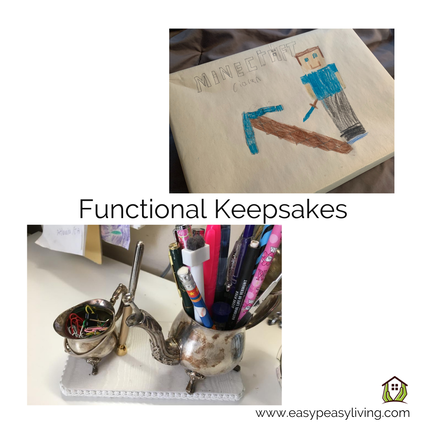 Save space by transforming your sentimental objects into functional ones. Save space by transforming your sentimental objects into functional ones. No matter how much of a minimalist you are, you likely have a few treasured keepsakes stashed away somewhere in the hard-to-reach spaces of your home, if not consuming valuable real estate in your closets, cabinets and drawers. I’m willing to bet these trinkets represent a little bit of a challenge to your sense of organization, too. Organizing is all about managing your stuff with efficiency, so you probably already know that the first step in any organizing project is to purge excess items you don’t really need or use. For many of us, this leads to a dilemma: how do we justify storing boxes and bins of old memories whose only purpose is to give us the warm fuzzies? The mere thought of parting with beloved memorabilia evokes feelings of guilt or sadness, yet keeping them feels self-indulgent and counter-productive. Well, I’m here to assure you that you need not sacrifice your favorite childhood mementos in the name of organization. The key is in discovering a dual functionality for some, and assuming the role of a highly selective curator for the rest. First, it’s important to recognize that less really is more when it comes to memories. Think about why items in a museum are so valuable. It’s because they are representative and rare. Second, understand that you cannot experience the nostalgia these items evoke unless you actually see them. If you pack them away in a storage bin in the attic or shove them in the back of your closet, they can’t fulfill their function of sweeping you down memory lane unless you drag them out and look through them. The more you have, the less likely you will be to do that. Seriously, when was the last time you made the effort to do that? The challenge is to save just enough to preserve your cherished memories without creating unnecessary clutter or robbing yourself of the space you need for other items. One way to do this is to bring them out into the sunshine of your everyday existence and assign them a second function that enables you to eliminate other, less meaningful objects. Here are a few examples of what I mean:
Follow EasyPeasyLiving’s “Organizing Outside the Box” board on Pinterest for more ideas on ways to repurpose objects in a functional, yet meaningful way. The possibilities are truly endless and limited only by your creativity. Now obviously not every keepsake can be transformed into a functional object, and the idea of tucking away a few meaningful pieces in “time capsule” fashion has an appeal all its own. Just keep in mind that the best time capsules are a) representative and b) small. In other words, be selective about what you save, and define the space you are devoting to keepsake storage first. If you start to outgrow the space, review the contents and eliminate objects that are no longer as relevant as maybe they once were. If you can’t remember the significance of a piece, let it go. A special note to parents: Involve your children in the decision-making process whenever possible. Let them select the artwork that means the most to them while teaching them how to make balanced, selective decisions. Do not fall into the trap of saving too many old toys, school papers, or baby clothes they’re not likely to remember. They will not thank you for offloading boxes of, what to them, is a bunch of meaningless old junk when they move out or you pass on. With a little creativity, even preserving your memories without sacrificing space can be easy peasy! Do you know someone who could use help taking back control of their home, life and schedule? Encourage them to subscribe to the EPL Blog by sharing this link with them.
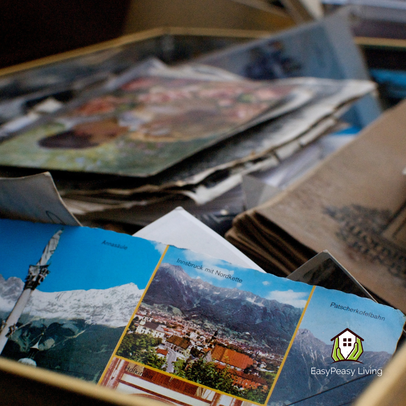 Every item in your home should serve a purpose. If it doesn’t, it is only in your way and should be purged. That goes for your paper keepsakes as well. The purpose of keepsakes is to preserve moments from your past that reflect who you have been, are and will become. So many people struggle to maintain control over this category of items because they lack a clear vision of what that means. The bad news is that there is no one-size-fits-all description I can give you, because it varies from person to person. The good news is that you don’t need me to give you one, because you can create one for yourself. It’s not the specific parameters that matter...it’s that you have some. Think about your paper keepsakes like artifacts in a museum, where you are the curator. These are items that you select that tell a story about your life. Another way to look at it is to imagine that your stash of keepsakes is a time capsule you are sending to your future self and those you leave behind. What is most important to remember? What are the milestones, achievements, values and memories that have shaped who you are? Who were the people that mattered to you or impacted your life? I recently combed through my own enormous stash of disorganized keepsakes and made some tough decisions about what to keep and what not to. I was able to pare it waaayy down from four oversized plastic bins to four small boxes (one for each member of my family). It was a lot easier once I laid some boundaries. Here are some examples of the ground rules I followed in case they may help you in setting your own guidelines:
Those were my rules. Yours may be completely different. The point is to decide what they are first. Write them down as a guide for when those really tough decisions arise...and they will. While you are unlikely to miss anything you ultimately decide to toss, making the decision to toss it can feel in that moment like deciding to chop off your own arm. Be brave and remember that avoiding that unpleasantness is probably how you ended up with such a big pile of stuff to go through. Try some of these strategies to make it easier:
When you take the time to define what’s meaningful, you honor your past without hindering your ability to live comfortably in the present and to make new memories for your future. With a little perspective and a few basic parameters, even controlling your keepsakes can be easy peasy. Don't miss out! Sign up to get new posts of the EPL Blog delivered straight to your inbox each week!
|
AuthorValerie Sheridan is a professional organizer, wife, mother of two, and Founder/Owner of EasyPeasy Living. Archives
October 2022
Categories
All
|
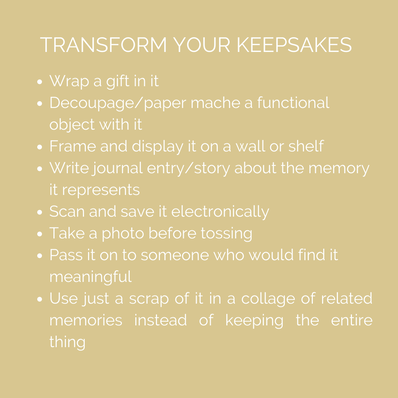
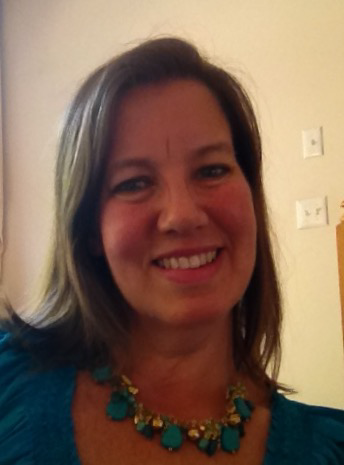
 RSS Feed
RSS Feed